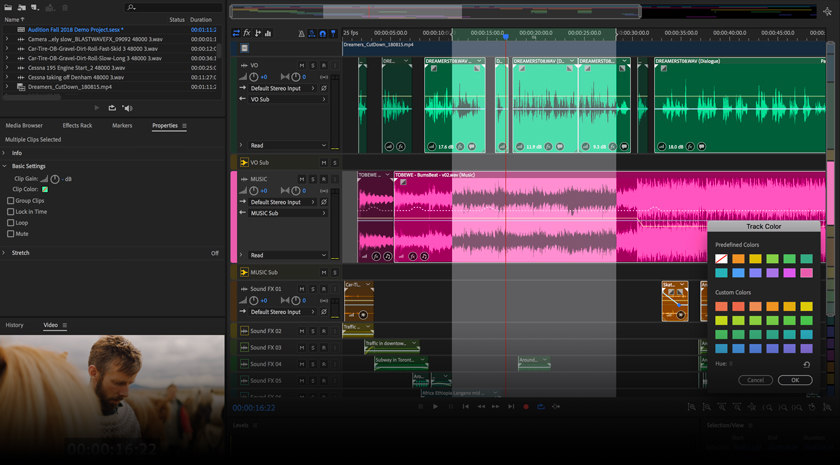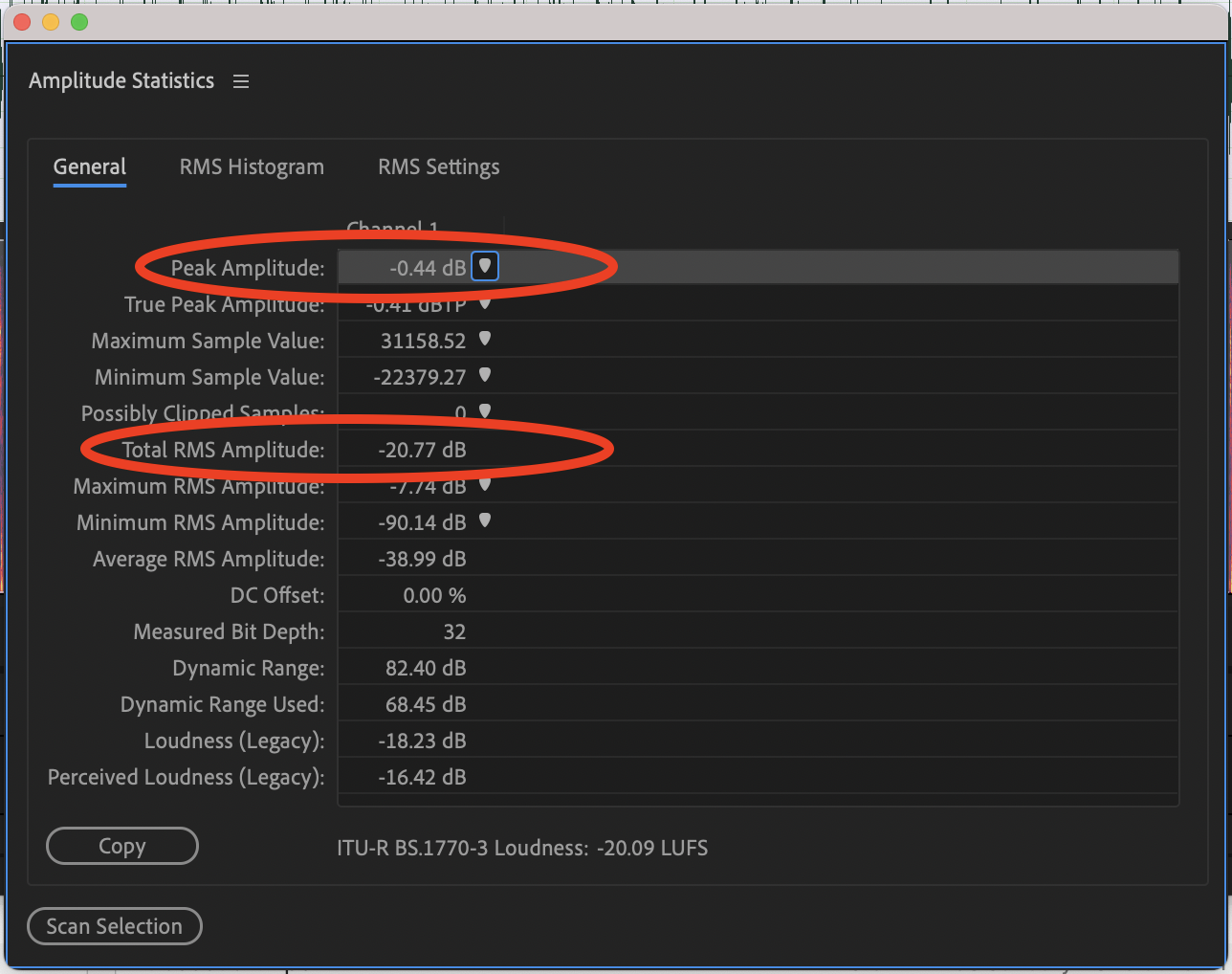How to check RMS levels in Adobe Audition

What does RMS stand for in audio and what does it do?
In audio, RMS stands for "Root Mean Square." It is a mathematical term used to describe the average value of a varying quantity over a specific time period. In the simple terms its audio signals, RMS is used to measure the amplitude or loudness of a sound waveform.
RMS is commonly used in audio processing and measurement to represent the amplitude of audio signals accurately. It is used in various applications, including audio recording, mixing, and mastering, as well as in audio equipment specifications, such as amplifier power ratings or the dynamic range of audio devices.
By using RMS measurements, audio publishing platforms like ACX, Findaway Voices, Authors Republic etc can ensure proper gain staging, control dynamics, set appropriate recording levels, and maintain consistent audio quality throughout the production and playback process.
In addition to its application in measuring the amplitude of audio signals, RMS is also utilized in various audio processing tasks and equipment.
One common use of RMS is in dynamic range compression, which is a technique used to control the dynamic range of an audio signal. Dynamic range refers to the difference between the loudest and softest parts of a sound. By analyzing the RMS value of an audio signal, dynamic range processors can automatically adjust the signal's gain to reduce the level of dynamic variation, making softer sounds louder and louder sounds softer. This helps to create a more balanced and consistent audio output.
RMS is also relevant in audio metering and monitoring. Amplitude Statistics, for example, are often calibrated to display RMS values. These statistics provide visual representations of audio signal levels, allowing sound engineers or you if you are editing, to monitor and adjust the volume appropriately. By using RMS measurements, they can ensure that the audio signal remains within acceptable ranges, preventing distortion or clipping that can degrade the sound quality.
Overall, RMS is a fundamental concept in audio engineering, serving as a valuable tool for measuring and controlling the amplitude of audio signals. Its applications span across various aspects of audio production, processing, and equipment design, contributing to the creation of high-quality sound experiences.
What is the RMS levels for audiobooks?
Audiobooks typically aim for a consistent and comfortable listening experience for the audience. As such, the RMS levels are often set to ensure a balance between clarity, intelligibility, and avoiding listener fatigue. The recommended RMS levels for ACX, Findaway Voices, Authors Republic typically fall within a range of -23 dBFS (decibels relative to full scale) to -18 dBFS.
These levels are chosen to allow for a sufficient headroom (the difference between the loudest and softest parts of the audio) while still maintaining an adequate average loudness. This ensures that the narration or dialogue remains clear and easily understandable, even when listened to in different environments or on various playback devices.
It's worth noting that the recommended RMS levels for audiobooks can also be influenced by specific distribution platforms or requirements. Some platforms may have their own loudness normalization algorithms or guidelines in place, which may affect the desired target levels. Ultimately, the goal of determining the RMS levels for audiobooks is to strike a balance that provides a pleasant listening experience, maintains the intelligibility of the narration or dialogue, and meets any applicable industry or platform standards.
What is the maximum peak for audiobooks?
The maximum peak level for audiobooks is typically set to ensure that the audio does not exceed a certain threshold and avoids distortion or clipping. The specific maximum peak level may vary depending on the requirements, in general, the maximum peak level for audiobooks is often set to -3 dBFS (decibels relative to full scale) or lower by ACX, Findaway Voices and Authors republic. This allows for a sufficient safety margin to accommodate occasional transient peaks in the audio without causing distortion or clipping, especially during louder moments or sudden changes in volume. By keeping the peak levels below this threshold, the audio remains clean and free from distortion, ensuring a high-quality listening experience for the audience.
If you follow the above advice you will have no issues with getting your book to pass ACX, Findaway Voices or Authors republics checks and your audiobook will be published to Audible and many other platforms. If you are struggling to decide which platform best meets your needs, check out this blog on the pros and cons for each audiobook platform.
A great feature in adobe audition for you to check if you are on the right track is the “Amplitude Statics:
How to check the levels in Adobe Audition?
Once you have edited the files, an easy way to check if you meet the requirements:
Click on the "Window" option in the main menu

Scroll down to "Amplitude Statistics"

Click on Scan Selection

You need to focus on 2 of the options, these will be critical for you to get audiobook to pass:
"Peak Amplitude" and "Total RMS Amplitude"
The Peak should not be higher than -3dbs
RMS levels should be between -18db -23db

The below is how it should look like. We will show you in another blog how to get this right. But it is common practise to get your audio mic levels correct in the first place. Usually if the microphone was set to a low input, the RMS levels would fail. Visit how to set your mic levels blog

